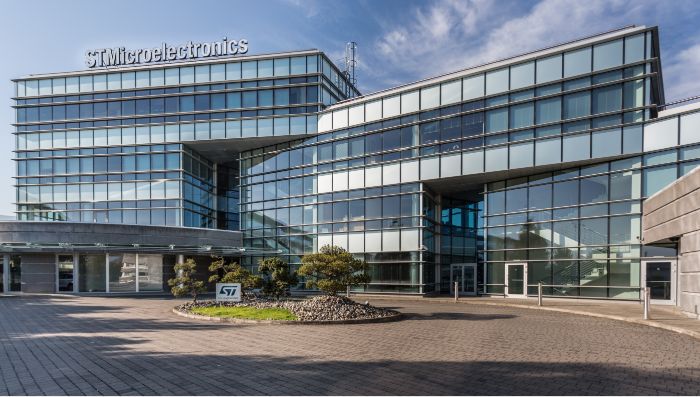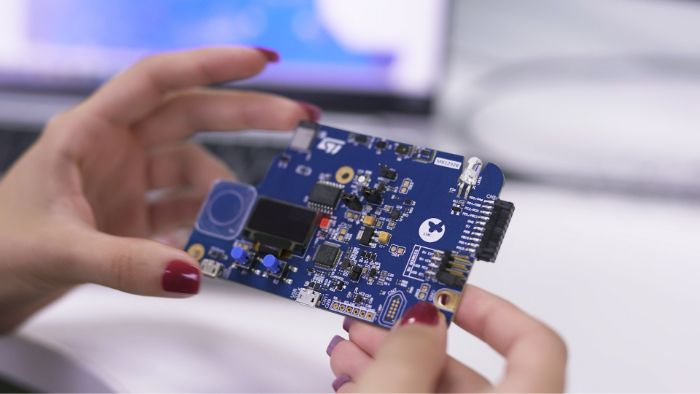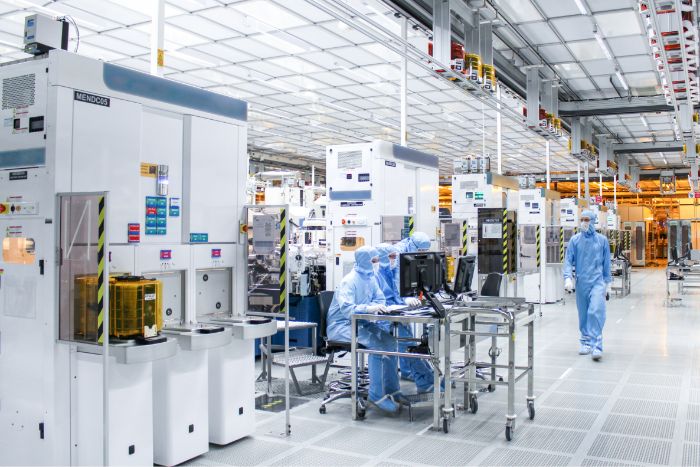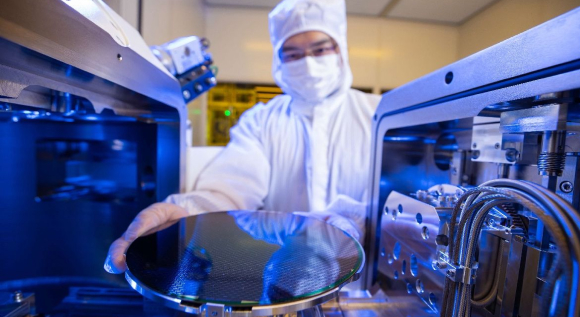 By Remi EL-OUAZZANE, President, Microcontrollers, Digital ICs and RF Product Group
By Remi EL-OUAZZANE, President, Microcontrollers, Digital ICs and RF Product Group
Electrification and digitalization are profoundly transforming the automotive industry. While some carmakers have recently scaled down their electrification plans, we envision a future where affordable hybrid and electric cars will be predominant in the market. These vehicles will be software-defined, utilizing Ethernet as the primary vehicle bus protocol. Over-the-air (OTA) updates will be the linchpin of the end user’s car experience ensuring constant improvement and seamless integration of new features. This comes with continuously growing memory space and performance requirements, which will allow the expansion of a car’s functionality throughout its lifetime, with zero downtime.
This future is already a reality in some models of newer car market entrants. Meanwhile traditional car makers are progressively adopting these innovations, transforming their car architectures step-by-step through an evolutionary process. Although carmakers in each region face different challenges, they share common themes: becoming more competitive, meeting sustainability goals, investing in superior technology, and adapting business models. These requirements have created a huge challenge, not just for the automakers but also for Tier 1s and suppliers, to increase productivity, tackle complexity, and shorten vehicle development times for their software-defined vehicles (SDVs).
Our mission at ST is to assist Tiers 1s and car OEMs in accelerating this transformation. We offer a complete portfolio of products able to address all the needs, from local actuation and smart sensing to high-performance real-time processing with cross functional integration across multiple application domains.
As a core part of our strategy to enable this transformation, we are evolving our automotive microcontroller roadmap on two pillars aligned with ST’s integrated device manufacturer (IDM) model. We are building the industry’s first Arm®-based product portfolio that spans the entire automotive MCU spectrum from low-end to high-end solutions:
- The Stellar family: A scalable ARM-based hardware architecture supporting real-time virtualization of multi-ASIL ECUs. It features a rich set of IOs and peripherals, and offers a unique OTA value proposition. This is made possible by leveraging our internally developed embedded non-volatile memory technology (eNVM), built on 28nm FD-SOI technology.
This is the industry’s first family of emerging technologies after eFlash, representing the most mature and smallest memory cell automotive-grade solution on the market. The Stellar family is optimized for electrification, including x-in-1 vehicle motion control computer, new vehicle architectures and safety MCUs for safety critical subsystems, such as ADAS, zone and body integration.
- The STM32A: A brand-new series in the STM32 family will be built on the STM32 foundation in ST’s eNVM technology. The STM32A will be tailored for actuation at the very edge of the car network, such as car body control and smart sensor management, and will support ASIL B automotive safety level.
ST’s expanded Arm-based MCU offering for automotive will have all capabilities to meet system requirements in the electrical/electronic (E/E) architecture of next-generation cars. Both platforms are augmented by a growing set of ecosystem partners, enhancing the value that the hardware can deliver in enabling simpler, faster, and more efficient development by our customers.
We have successfully introduced leading-edge Stellar P and G series, which have already reached qualification and we will shortly reach an important milestone with the start of volume production. These products are gaining momentum, particularly among our customers in Asia and Europe. BYD is substantially evolving its architecture for managing electrification systems in the next-generation cars through integration of multiple electronic units into one streamlined, efficient device.
Going forward we will create a unified MCU roadmap that converges on a platform, which reduces complexity by simplifying design and scalability, while guaranteeing the highest levels of safety and security. It will provide optimal performance and efficiency, helping to lower overall manufacturing costs. This will ultimately integrate the best of ST’s industrial and automotive hardware and software microcontroller platforms. With this we will support the evolving needs of the automotive industry in areas like edge AI and security.
Edge AI technology is one example where we see what is being adopted now in industrial applications benefiting automotive in the future. Neural accelerator technology and the associated tools that enable developers to easily implement AI in their applications whatever their level of data science expertise will enhance automotive systems in the future. Security is another area where we see the convergence of industrial and automotive bringing significant benefits.
In conclusion, STMicroelectronics is committed to helping the automotive industry meet the challenges of electrification and digitalization by providing the solutions needed today as well as a stronger unified MCU platform roadmap going forward. This roadmap will reduce complexity, ensure safety and security, and deliver optimal performance and efficiency, ultimately supporting the development of next-generation vehicle architectures and software-defined vehicles.
Join us on this exciting journey to transform the future of cars.
Testimonials:
 “As global leader in lithium-ion batteries, Sunwoda provides stable and reliable electronic system solutions for automotive suppliers worldwide. Our new collaboration with STMicroelectronics focuses on developing solutions using ST’s advanced Stellar microcontrollers and proprietary production processes, which primary include battery management systems, and VDC/Zonal and body control functions. Together, we aim to provide intelligent solutions that enhance the next generation of energy vehicles in China and globally,” said Wang Mingwang, founder, Sunwoda.
“As global leader in lithium-ion batteries, Sunwoda provides stable and reliable electronic system solutions for automotive suppliers worldwide. Our new collaboration with STMicroelectronics focuses on developing solutions using ST’s advanced Stellar microcontrollers and proprietary production processes, which primary include battery management systems, and VDC/Zonal and body control functions. Together, we aim to provide intelligent solutions that enhance the next generation of energy vehicles in China and globally,” said Wang Mingwang, founder, Sunwoda.
 “As the driver experience continues to evolve in the age of AI and software-defined vehicles, advancing automotive functional safety, flexibility and real-time performance capabilities is essential,” said Dipti Vachani, senior vice president and general manager, Automotive Line of Business, Arm. “Built on Arm, the Stellar microcontroller family taps into the Arm compute platform’s advanced safety and real-time features, as well as the broad Arm software ecosystem. This enables car manufacturers to comply with strict safety regulations while implementing innovative features that keep them at the forefront of the automotive industry.”
“As the driver experience continues to evolve in the age of AI and software-defined vehicles, advancing automotive functional safety, flexibility and real-time performance capabilities is essential,” said Dipti Vachani, senior vice president and general manager, Automotive Line of Business, Arm. “Built on Arm, the Stellar microcontroller family taps into the Arm compute platform’s advanced safety and real-time features, as well as the broad Arm software ecosystem. This enables car manufacturers to comply with strict safety regulations while implementing innovative features that keep them at the forefront of the automotive industry.”
 “The path to the software-defined vehicle will be underpinned by the electrification of the powertrain, leading to enhanced digitalization, vehicle connectivity and driving automation capabilities. This is enabled through zonal and centralized controllers providing the necessary compute capabilities,” said Asif Anwar, Executive Director of Automotive Market Analysis, TechInsights. “STMicroelectronics, a leading supplier of automotive MCUs, leverages its Stellar family to meet SDV requirements and the growing trend of X-in-1 integration, offering OEMs a path to reimagine vehicle architecture with solutions that merge multiple functions seamlessly. With scalable, secure, and high-performance MCUs, optimized for power efficiency and developed in-house, ST is empowering the automotive industry to innovate for the future.”
“The path to the software-defined vehicle will be underpinned by the electrification of the powertrain, leading to enhanced digitalization, vehicle connectivity and driving automation capabilities. This is enabled through zonal and centralized controllers providing the necessary compute capabilities,” said Asif Anwar, Executive Director of Automotive Market Analysis, TechInsights. “STMicroelectronics, a leading supplier of automotive MCUs, leverages its Stellar family to meet SDV requirements and the growing trend of X-in-1 integration, offering OEMs a path to reimagine vehicle architecture with solutions that merge multiple functions seamlessly. With scalable, secure, and high-performance MCUs, optimized for power efficiency and developed in-house, ST is empowering the automotive industry to innovate for the future.”
Find out more about the ST technologies enabling next-gen cars here.
Language Versions
related-content




